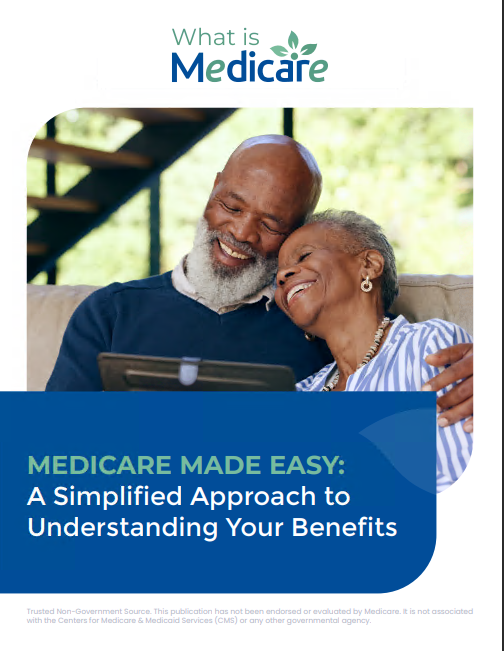Part D Coverage
Introduction: Navigating the Landscape of Part D Coverage
Medicare Part D provides essential prescription drug coverage to beneficiaries, ensuring access to medications needed to manage various health conditions. Understanding the components of Part D coverage, including prescription drug benefits, formularies, coverage stages, costs, and utilization strategies, is essential for beneficiaries to make informed decisions about their healthcare. In this guide, we’ll delve into the intricacies of Part D coverage, empowering beneficiaries to maximize their medication benefits and optimize their health outcomes.
Medicare Part D offers coverage for a wide range of prescription drugs, including brand-name and generic medications used to treat various medical conditions. Part D plans must cover at least two drugs in each therapeutic category and class, ensuring beneficiaries have access to a diverse range of treatment options. Prescription drug benefits under Part D include:
- Medication Coverage: Part D plans cover prescription drugs approved by the Food and Drug Administration (FDA) for use in treating medical conditions. Covered medications may include drugs for chronic conditions, acute illnesses, preventive care, and specialty therapies.
- Formulary Inclusions: Part D plans maintain a formulary, or list of covered medications, which specifies the drugs covered by the plan and any coverage restrictions or limitations. Beneficiaries should review the formulary to ensure their prescribed medications are included in the plan’s coverage.
- Access to Preferred Pharmacies: Many Part D plans offer access to preferred pharmacy networks, where beneficiaries can fill their prescriptions at lower cost-sharing rates. Preferred pharmacies may include retail pharmacies, mail-order pharmacies, and specialty pharmacy providers.
Understanding Part D Formularies
Part D formularies play a critical role in determining which medications are covered by a Part D plan and at what cost. Key aspects of Part D formularies include:
- Tiered Drug Coverage: Part D formularies often categorize medications into different tiers based on their cost and clinical effectiveness. Tiered drug coverage may include preferred generic drugs, non-preferred generic drugs, preferred brand-name drugs, and non-preferred brand-name drugs, each with varying cost-sharing requirements.
- Prior Authorization: Some medications on Part D formularies may require prior authorization from the prescribing healthcare provider before the plan will cover them. Prior authorization ensures appropriate use of medications, which may be required for high-cost or specialty drugs.
- Step Therapy: Part D plans may implement step therapy protocols, requiring beneficiaries to try lower-cost or generic alternatives before receiving coverage for more expensive brand-name medications. Step therapy helps control costs and promotes the use of clinically appropriate treatment options.
Understanding the structure and coverage rules of Part D formularies helps beneficiaries navigate their prescription drug coverage and access the medications they need at the most affordable cost-sharing rates.
Coverage Stages in Part D
Medicare Part D coverage is divided into several stages, each with different cost-sharing responsibilities for beneficiaries. The main coverage stages in Part D include:
- Initial Coverage Period: During the Initial Coverage Period, beneficiaries pay a portion of their prescription drug costs through copayments or coinsurance, while the Part D plan covers the remaining costs. Once total drug costs reach the initial coverage limit set by Medicare, beneficiaries enter the next stage of coverage.
- Coverage Gap (Donut Hole): In the Coverage Gap, also known as the Donut Hole, beneficiaries are responsible for a higher percentage of their prescription drug costs. However, thanks to the Affordable Care Act, beneficiaries receive discounts on brand-name and generic drugs while in the Coverage Gap, gradually reducing their out-of-pocket expenses.
- Catastrophic Coverage: Once beneficiaries’ out-of-pocket spending reaches the catastrophic coverage threshold, they qualify for catastrophic coverage, where their cost-sharing responsibilities are significantly reduced. Medicare pays the majority of prescription drug costs for beneficiaries in the Catastrophic Coverage stage.
Understanding the coverage stages in Part D helps beneficiaries anticipate their out-of-pocket expenses and plan their medication needs accordingly throughout the year.
Costs Associated with Part D Coverage
Beneficiaries enrolled in Medicare Part D may incur various costs associated with their prescription drug coverage, including:
- Monthly Premiums: Part D plans typically charge a monthly premium for prescription drug coverage, in addition to the premium for Medicare Part B. Premium amounts vary depending on the plan selected and the coverage options offered by the insurance company.
- Annual Deductible: Some Part D plans may have an annual deductible, which is the amount beneficiaries must pay out of pocket before the plan begins to cover their prescription drug costs.
- Copayments and Coinsurance: Beneficiaries are responsible for copayments or coinsurance for each prescription filled, depending on the drug’s tier and the plan’s cost-sharing requirements. Copayments are fixed amounts, while coinsurance is a percentage of the drug’s cost.
- Coverage Gap Costs: Beneficiaries in the Coverage Gap may incur higher out-of-pocket costs for prescription drugs until they reach the catastrophic coverage threshold and qualify for reduced cost-sharing.
Understanding the costs associated with Part D coverage helps beneficiaries budget for their prescription drug expenses and select a plan that offers affordable coverage for their medication needs.
Maximizing Part D Coverage: Tips for Beneficiaries
Beneficiaries can maximize their Part D coverage and minimize out-of-pocket expenses by following these tips:
- Review Formularies Annually: Review your Part D plan’s formulary annually to ensure your prescribed medications are covered and assess any changes in coverage or cost-sharing requirements.
- Explore Generic Alternatives: Ask your healthcare provider about generic alternatives for your prescription medications, which may offer comparable therapeutic benefits at a lower cost.
- Utilize Preferred Pharmacies: Take advantage of preferred pharmacy networks offered by your Part D plan to access lower-cost prescription drugs and maximize your savings.
- Compare Plan Options: Compare Part D plans annually during the Annual Enrollment Period to assess changes in premiums, formularies, and coverage options. Consider switching plans if you find a better option that meets your medication needs and budget.
By implementing these strategies, beneficiaries can optimize their Part D coverage and ensure access to affordable prescription drug benefits under Medicare.
Conclusion: Leveraging Part D Coverage for Medication Needs
Medicare Part D offers vital prescription drug coverage to beneficiaries, ensuring access to essential medications to manage various health conditions. By understanding the components of Part D coverage, including prescription drug benefits, formularies, coverage stages, costs, and utilization strategies, beneficiaries can navigate their prescription drug coverage with confidence and optimize their health outcomes.
Empower yourself with knowledge about Part D coverage, review your medication needs annually, and explore plan options to find the coverage that meets your prescription drug needs and budget. With the right Part D plan in place, you can access the medications you need at an affordable cost and focus on maintaining your health and well-being.
Ready to maximize your prescription drug coverage under Medicare Part D? Download our free eBook. Connect with our licensed insurance agents today to explore Part D plan options and find the coverage that meets your medication needs and financial preferences. Your health and well-being are our top priorities—let us help you navigate Part D coverage and access the prescription drugs you need with peace of mind.



